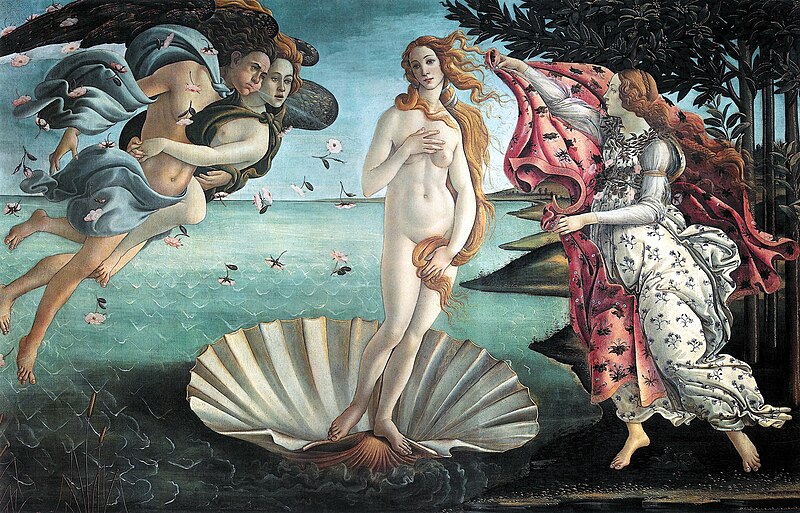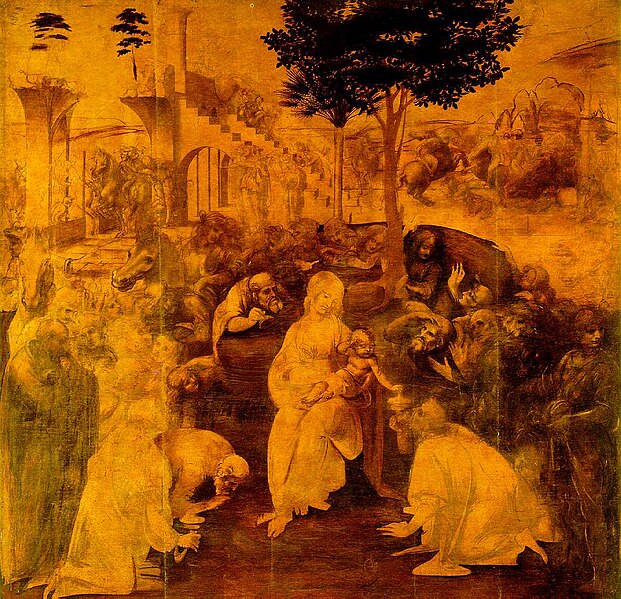It is one of those "you can't miss it" stops in Florence, but also requires planning to get through the galleries in one piece. I say it's worth stopping at the cafe halfway through, paying the cover charge to sit down and relax with a cup of coffee. you can buy your lunch there or just get a snack.
I admit, not all of the galleries in the museum were my cup of tea. Perhaps its just my own aesthetic, but i get tired of pictures filled with religious iconography. and the gold leaf triptychs. and the martyred saints. Perhaps its the costume historian in me, but i love seeing the works that depicted the current life, not the myths and stories of ages past.
Tangent: For example, at the Galleria dell'Accademia, besides the statue of the David I was most interested in the Cassone Adimari (1450, by Lo Scheggia), for it depicted the preparation for a wedding in Renaissance Italy. Here is just a part of the overall scene:
So a few works stood out to me more than others in the Uffizi. It was great seeing the Birth of Venus up close, but it was so crowded (think Mona Lisa at the Louvre). Also, after seeing an iconic two-dimensional painting reproduced in books for most of your life, it is hard for it to seem particularly special up close (unless you have a real connection to the piece). Personally, I think sculpture can be more incredible up close, as a two-dimensional picture cannot capture it in full (ie Winged Victory at the Louvre).
Don't get me wrong. Some pieces took my breath away. Others made me think, and research more when I got home. Here are a few of my favorites that stood out:
Adoration of the Magi. Da Vinci, 1481-82
1469-1472: Series of Panels by Pollaiolo, depicting virtues: Temperance, Faith, Charity, Hope, Justice, Prudence, and (an early work by Botticelli) Fortitude. These are some amazing portraits of women--and look how kick ass Fortitude is (also, how Botticelli's style differs from Pollaiolo).
A few others I cannot find pictures online for, but they include Boscoli's Piramo e Tisbe, Spagnolo's Cupid & Psyche, and Pannini's Pool of Betsaida.
A gorgeous place, a great visit.







No comments:
Post a Comment